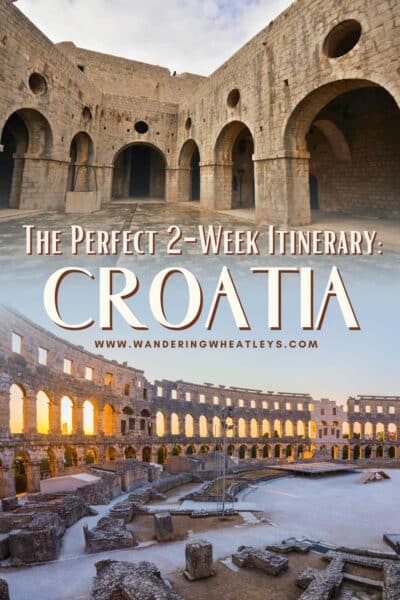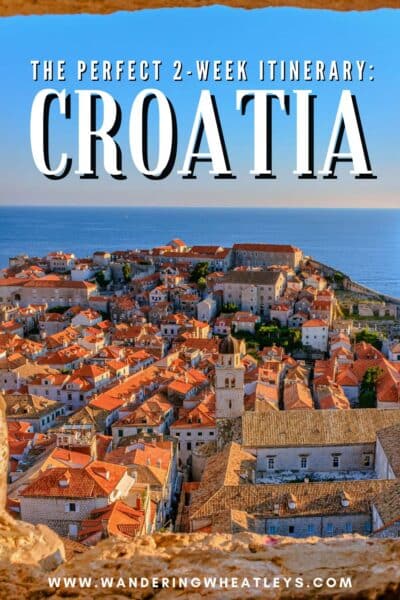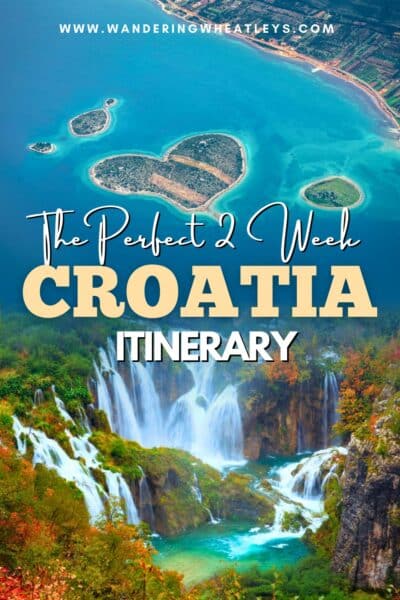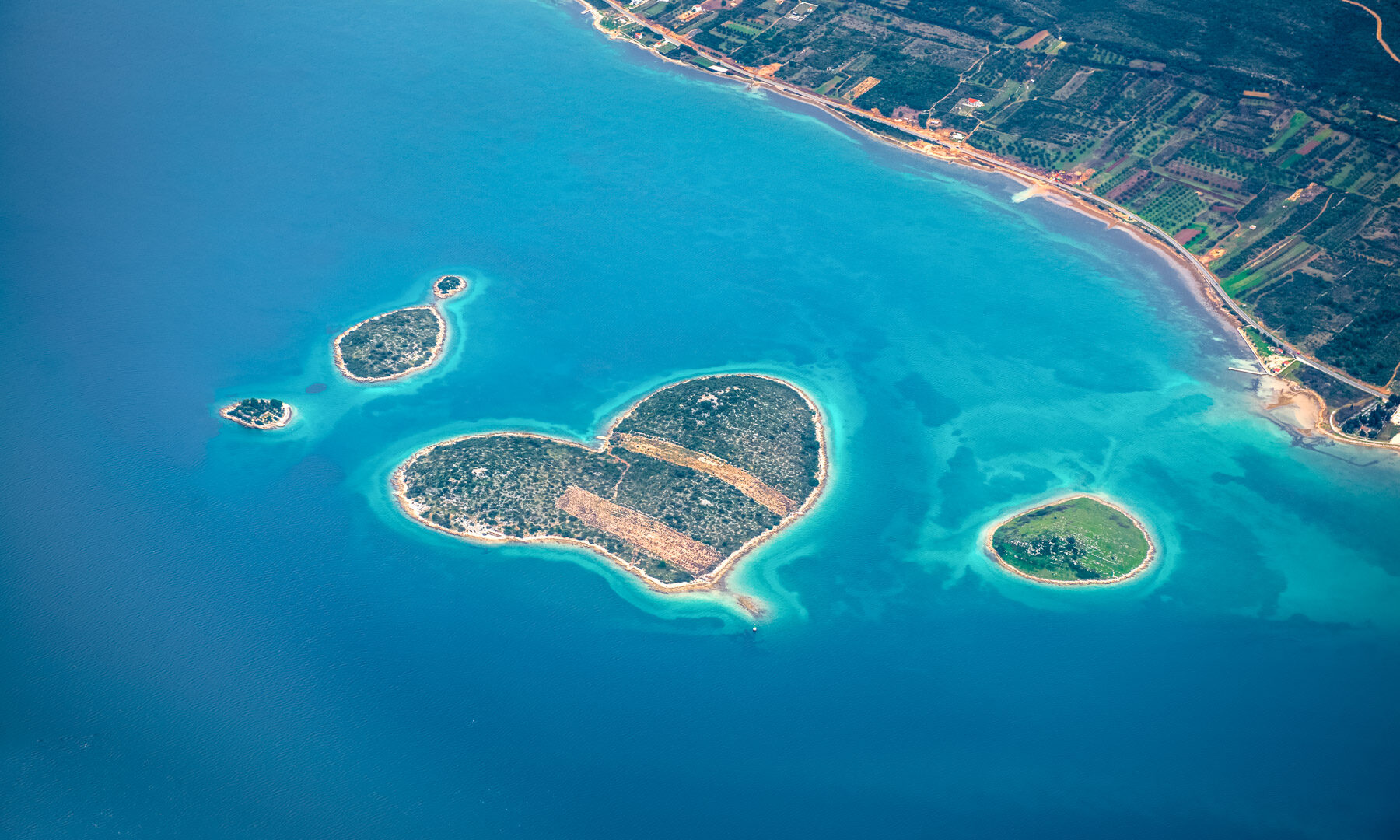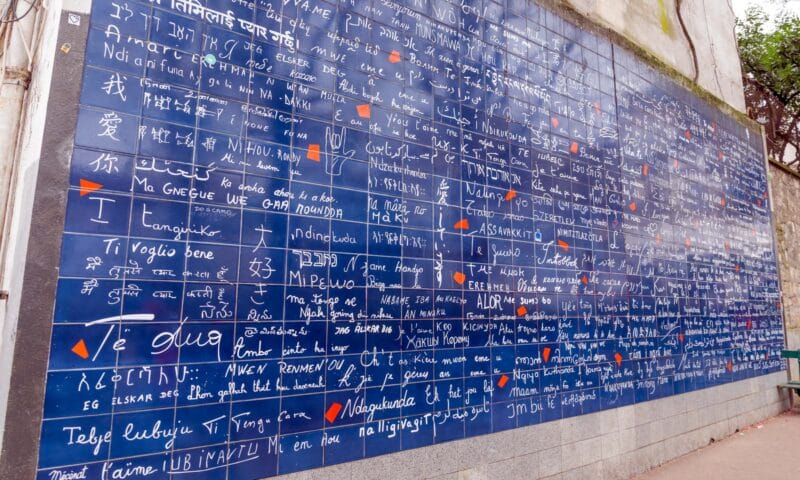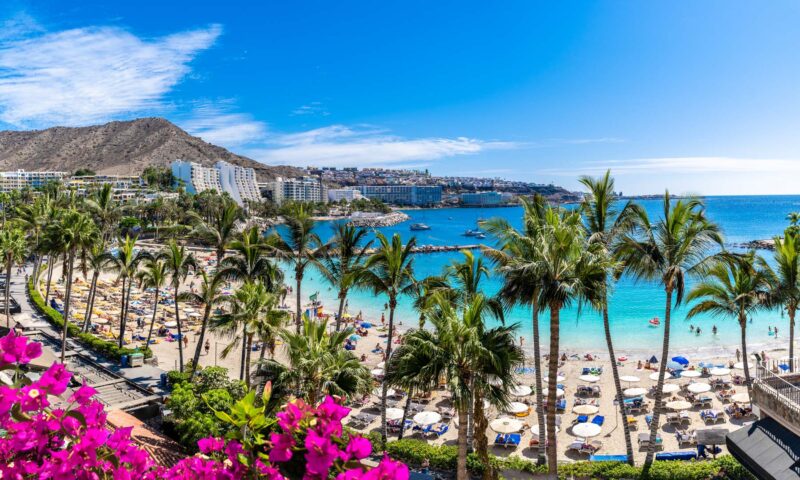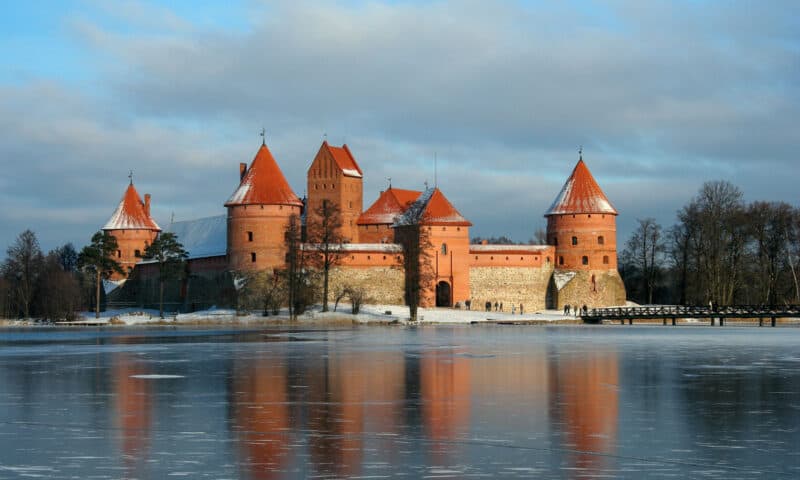Sunny and stunning, Croatia is a European vacation destination that we fall in love with time and time again. Spending 2 weeks in Croatia will always leave you wanting more, but it’s the perfect length of time to experience the best that this Balkan nation has to offer.
And from historic Roman ruins and towering Venetian castles to sun-drenched beaches and rustic island getaways, there’s a hell of a lot to fit into your trip. Our 14-day Croatia itinerary takes in all the highlights and a few places you might not perhaps have considered, offering a fantastic mix of coastal hotspots and inland destinations.
You’ll start in Zagreb, the lesser visited Croatian capital, where bustling markets, busy cafes, and the intriguing Museum of Broken Relationships await you. You’ll see the gorgeous Plitvice Lakes National Park in all its glory, explore the dramatic Istrian Peninsula, and enjoy sumptuous seafood as you travel south along the Dalmatian Coast.
Your Croatian itinerary takes you to Diocletian’s Palace in Split, to wineries and beaches on islands like Hvar and Korcula, and finally, to the grand walls of Dubrovnik, where you’ll end your trip with seafood and cocktails as the sun sets over the Adriatic Sea. If you’re planning a Balkan adventure, then keep reading as we reveal our perfect 2-week Croatia itinerary!
Disclaimer: This post may contain affiliate links. If you make a purchase or booking through one of our links we may earn a small commission (don’t worry, it’s at no extra cost to you).
Two Weeks in Croatia
Preparing for Croatia
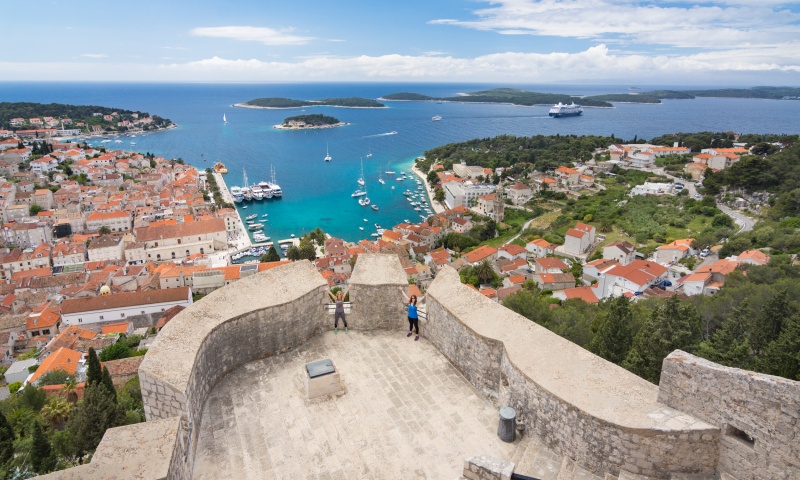
Recently integrated into the Schengen Area and Eurozone, it’s never been easier to travel to Croatia than now. At the start of 2023, Croatia took a big step forward when it adopted the Euro as its official currency, making it much simpler for you to visit Croatia as a standalone destination and easier to incorporate the country into a wider European itinerary.
That means you’ll now only need Euros when you’re visiting Croatia, and you’ll be able to withdraw them easily when arriving in the country. It also means that you won’t need to worry about visas if you’re holding a US passport (or a passport from many other countries, such as the UK or Australia). You’ll also find that due to its increasing popularity in recent years, Croatia is no longer a difficult country to travel around.
The official language is Croatian, a Balkan language with Slavic roots that’s written in the Roman alphabet. English is widespread in popular destinations like Split and Dubrovnik, while many Croatians might even speak English alongside other European languages like Italian or German.
Croatian is very similar to other neighboring languages like Serbian and Bosnian – although don’t say this to a local. The legacy of the Balkan Wars that followed the breakup of Yugoslavia in the 1990s (and led to Croatian independence) is still very raw 30 years later, and it’s useful to learn a little about the conflict before you visit Croatia.
But visiting Croatia is a fascinating experience, given its unique blend of history, cultures, and cuisines, and we know you’re going to have a fabulous time during your 2-week trip to Croatia.
The Best Time to Visit Croatia
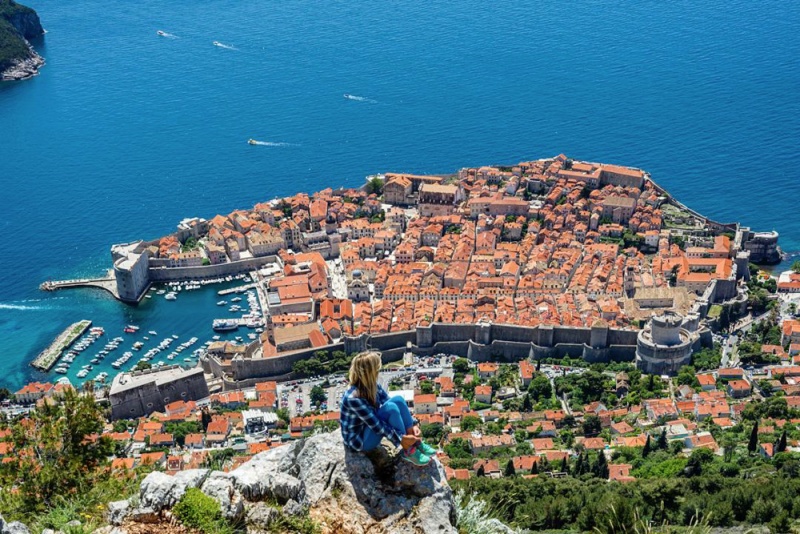
Temperatures reach highs of 86°F (30°C) in June, July, and August, which also coincides with the summer high season. In Zagreb, things are a little cooler, but you can still expect temperatures to reach the high 20s (high 70s) in summer.
Summer brings with it packed beaches and inflated prices across almost all of Croatia, and while the weather is beautiful, we recommend visiting in the shoulder seasons instead. Try spring (April and May) or Autumn (September and October) for slightly cooler weather and quieter beach towns.
The weather is perfect for hiking and sightseeing in the shoulder season, and to really avoid the crowds, you might consider visiting in winter. Temperatures are lower (down to 50°F/10°C during the day in places along the coast) and rain is frequent, but it’s a good time to visit historic sites and ruins rather than the beaches.
In Zagreb, you’ll even have the chance to experience the capital in all its winter glory. From December onwards, the public squares are packed with Christmas markets, and the streets can be covered in a wintry layer of snow (yes, it gets cold in the capital; the lowest temperature ever recorded was -7°F/-22°C).
Getting Around Croatia
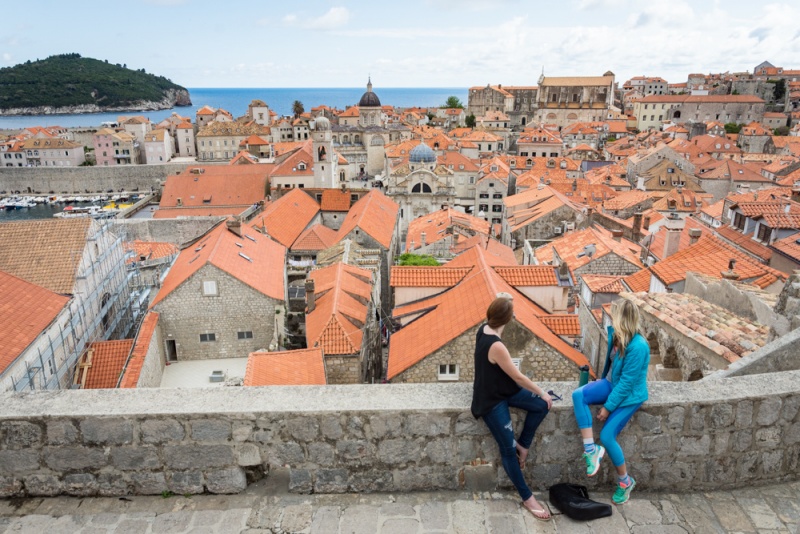
Croatia is well connected to major European cities by a plethora of international train, bus, and flight routes. While there are direct flights to Zagreb, Split, and Dubrovnik from many European destinations like London, Rome, and Berlin, you’ll find that it’s necessary to transit through major hubs to reach the United States and Asia.
Because of the geography (Croatia is a very long country!), we suggest flying into Zagreb and working your way south to Dubrovnik, where you can then fly back to your home country (or vice versa). In between, you’ve got plenty of options for getting around Croatia.
The first option is to rent a car (you can pick up in Zagreb and drop off in Dubrovnik when paying a one-way rental fee) or hire a private driver (if you’re not constrained by budgets). This is the quickest way to get around, and Croatian roads are in generally good condition and simple to navigate. Road-tripping along the Dalmatian Coast is absolutely spectacular, too.
It’s also relatively simple to get around using public transport, although you’ll need to plan your route in advance based on bus, train, and ferry timetables. There are many seasonal ferry services that don’t run in the winter months, while in peak season, public transport options are often supplemented by private transfer services that you can book through tour agencies.
When you’re traveling along the coast, it’s convenient to use Croatian ferries. From Split, there are regular services to the nearby islands, including Hvar, Korcula, and Brac.
You can also travel all the way south from Split to Dubrovnik, while you might consider booking a dedicated island hopping tour along the Dalmatian Coast. There are sailing ships and catamarans in the summer season, and it’s a fun way to explore while also meeting other travelers.
Croatia Itinerary: 2 Weeks to Explore the Highlights
Zagreb – 2 Nights
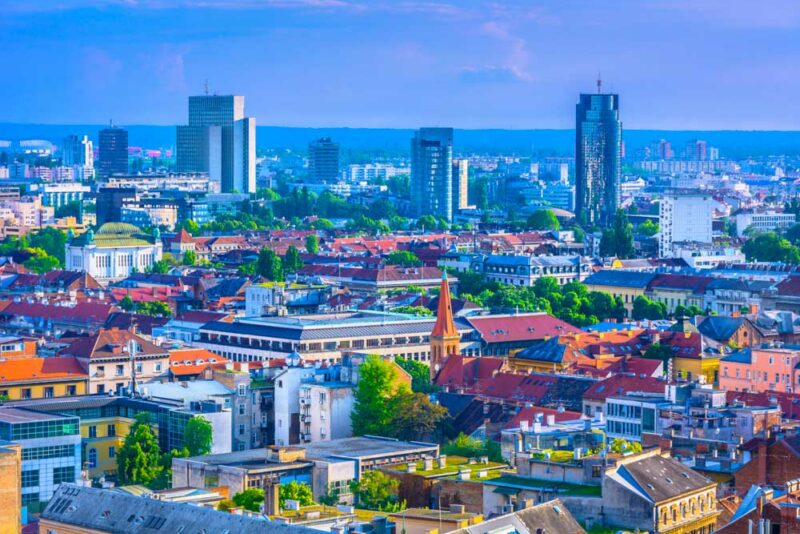
Your 2 weeks in Croatia begin in Zagreb, the quirky Croatian capital. Often overlooked by travelers intent on making their way to the coast as soon as they arrive, we highly recommend getting off the beaten track and giving the city a chance to shine.
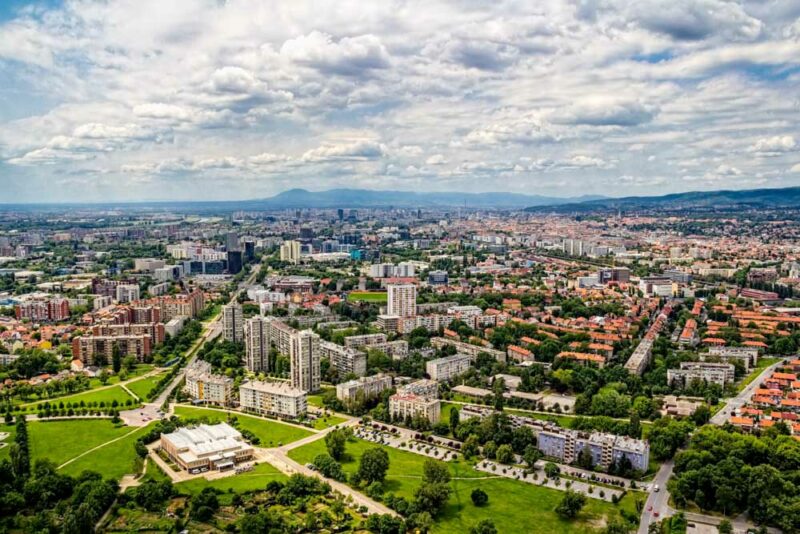
You won’t be disappointed, because this modern side of Croatia is a long way from its beach resorts. Here in Zagreb, the plazas are lined by centuries-old cafes bustling with students, and the galleries and museums play host to forward-thinking displays and exhibitions that you won’t find elsewhere in Croatia.
Museum of Broken Relationships
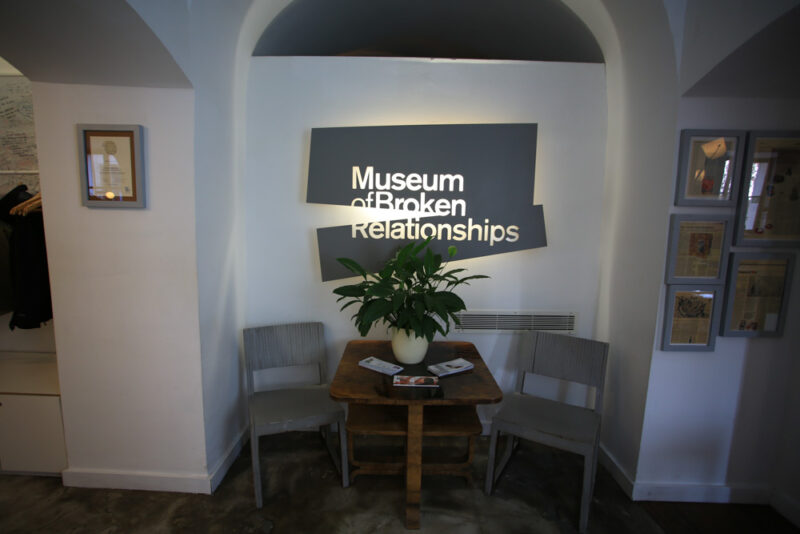
Start by visiting the Museum of Broken Relationships, one of the most notorious museums in Europe. This intriguing attraction tells the real-life stories of couples who’ve broken up, offering an unusually stark, honest, and open view of something most human beings can relate to but rarely speak about.
Move onto the Zagreb ‘80s Museum, where you can gain a unique insight into life in communist Croatia before the breakup of Yugoslavia, then visit the Croatian Museum of Naïve Art, which explores the works of rural painters and self-taught artists who pioneered the naïve art movement in 20th century Croatia.
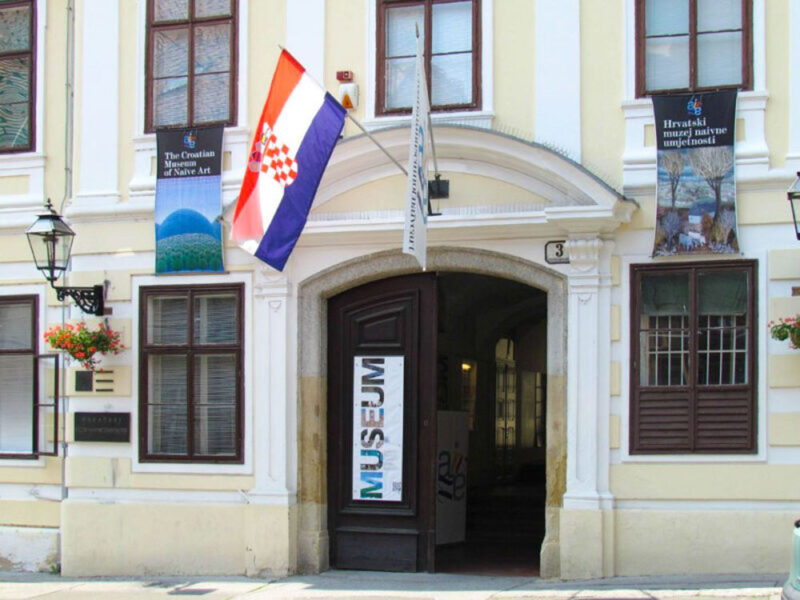
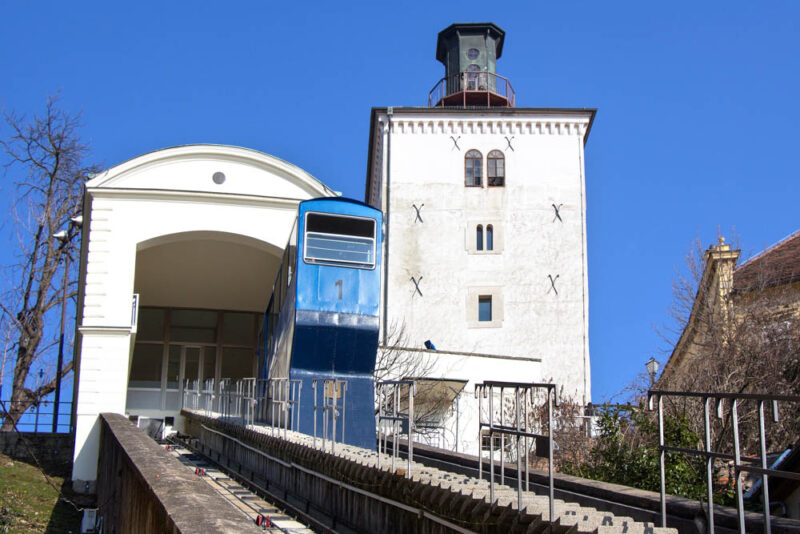
Zagreb is split between its upper and lower towns, and you’ll have fun exploring the differences between the two. The best hotels are typically found in the Lower Town, which dates to the Austro-Hungarian era in Croatian history when rich merchants fueled the growth of the city. The Upper Town is the oldest district, and here you’ll find the most historic sites in Zagreb, including Lotrscak Tower and the Cathedral of Zagreb.
Cathedral of Zagreb
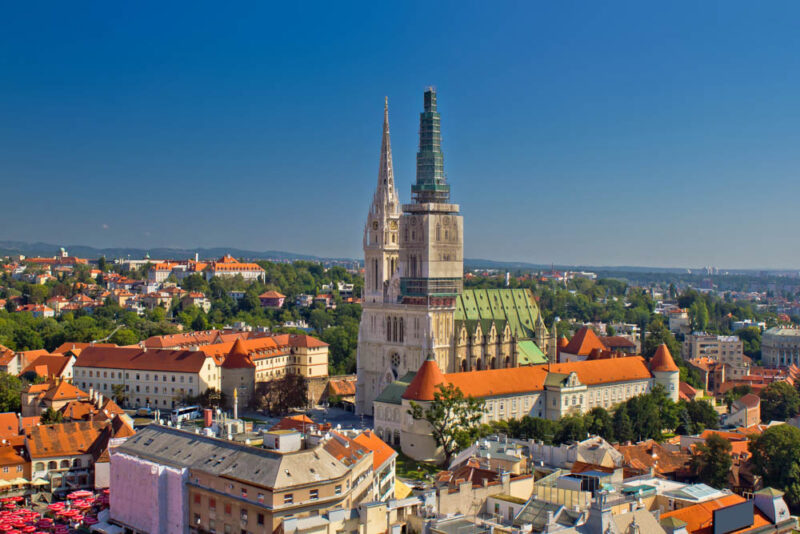
Ban Josip Jelacic Square (dedicated to a Croatian hero of independence) marks the intersection of Upper and Lower towns, and you can spend hours here simply sitting in cafes while watching the city pass you by.
Ban Josip Jelacic Square
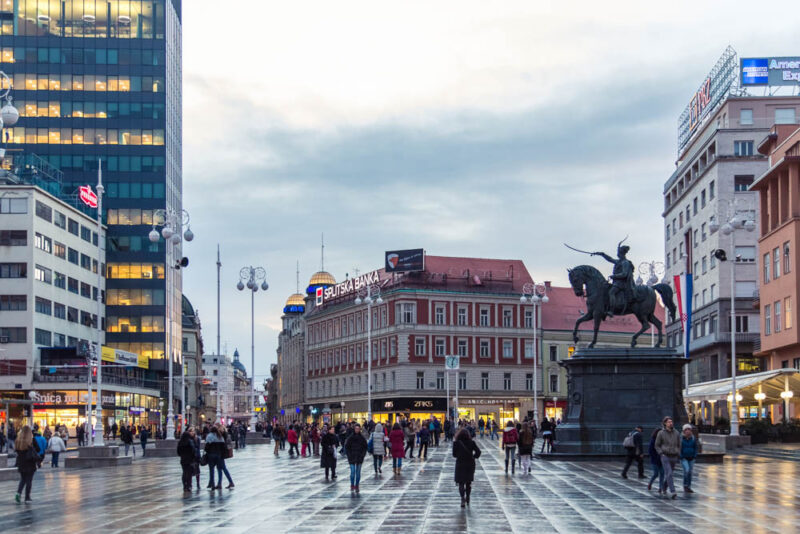
In summer, the capital has a busy events schedule, including film festivals and craft beer festivals. In winter, you can spend days just visiting the local Christmas markets and ice rinks in Zagreb.
Christmas Market
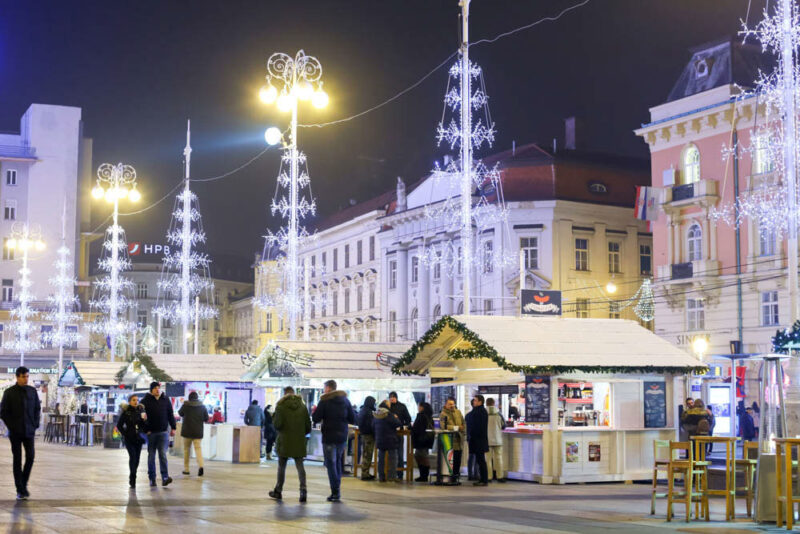
You’ve got some excellent restaurants in the capital, too, and food here takes a tangent from the seafood you’ll soon be enjoying in bountiful portions along the coast. We recommend Pod Zidom and Zinfandel’s for fine dining experiences.
Plitvice Lakes (day trip or overnight) – 1 night
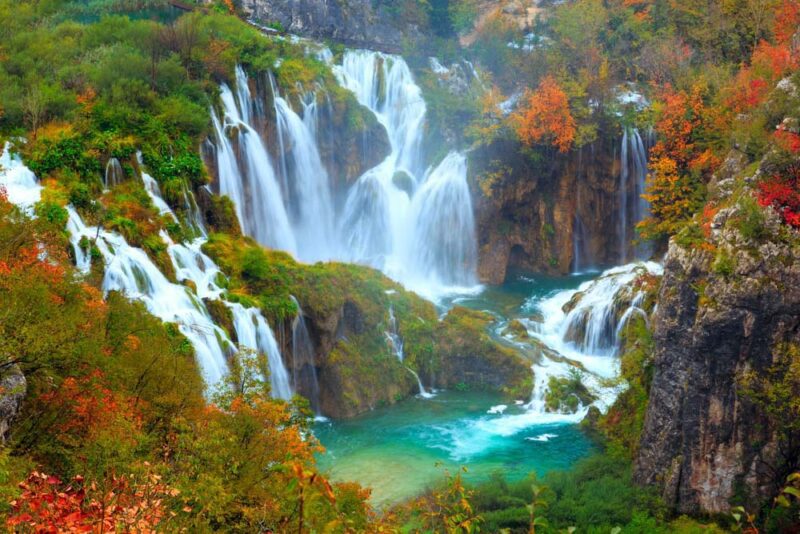
After your first two days exploring Zagreb’s museums, galleries, cafes, and restaurants, it’s time to experience a little bit of Croatian nature.
One of the most famous sights in Croatia is Plitvice Lakes, and this will be your beautiful outdoor destination on Day 3 of your Croatia itinerary. Now, Plitvice Lakes National Park is located a 2 hours drive from Zagreb, and it’s possible to do this leg of the itinerary either as a day trip from the capital or as a stopover.
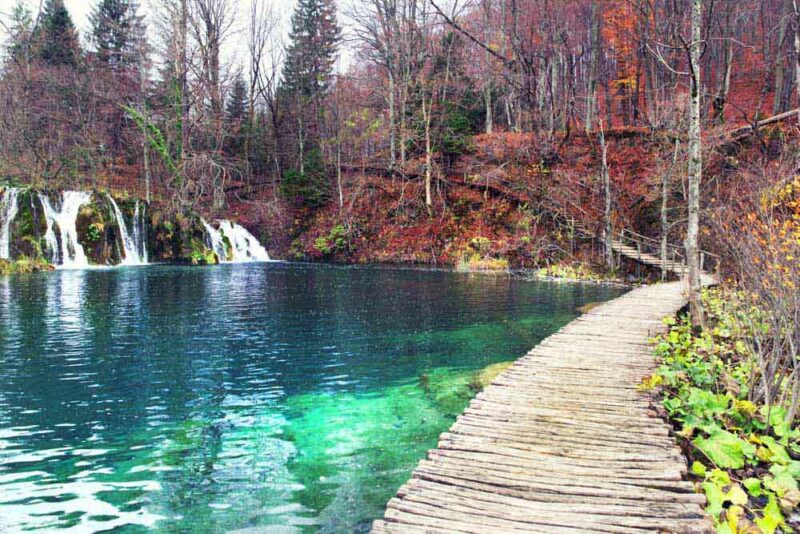
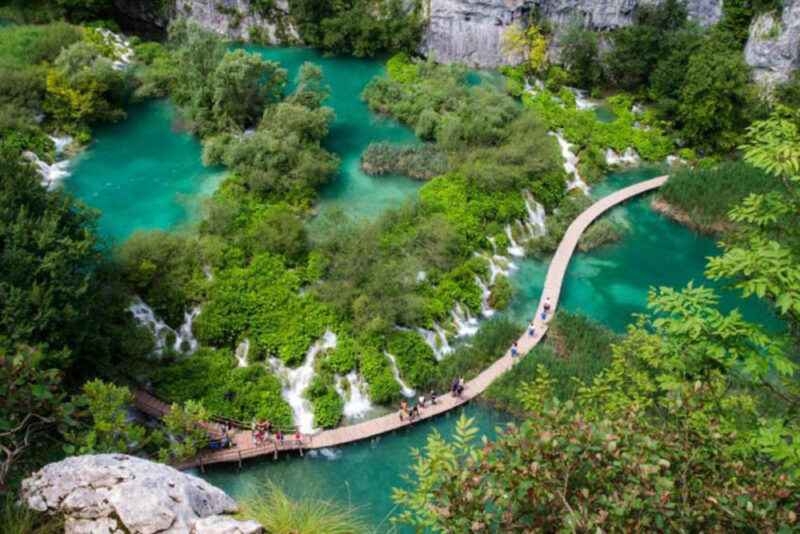
Accommodation is limited, though, especially so in summer, so many opt for an early start from Zagreb and return in the evening. This also saves you from packing and unpacking for one extra night!
When you arrive at Plitvice Lakes, you’ll be awed by the scale of the waterfalls, rivers, and lakes that make up this gorgeous national park. You’ll follow wooden boardwalks lining 16 terraced and interconnected lakes, enjoying expansive viewpoints above the waterfalls before taking the iconic electric boats for a close-up view of the water.
The surrounding area is mapped out with hiking trails suitable for different abilities, and you can pick up trail maps to help you explore further afield from the main lakes and waterfalls that make up this spectacular UNESCO World Heritage Site.
Pula – 2 Nights
Your next stop is the Istrian Peninsula, where you’ll be introduced to the Croatia you’re probably expecting. Located in the northwest of the country, the Istrian Peninsula overlooks the Dalmatian Sea and has a rich history dating far back to the Romans. Given the proximity to Italy, you’ll love the Mediterranean influence that flows through the culture and cuisine.
Roman-built arena
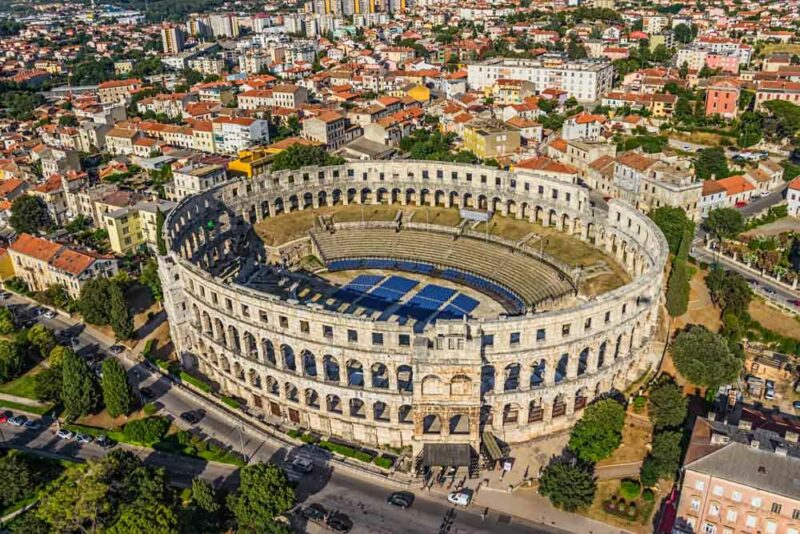
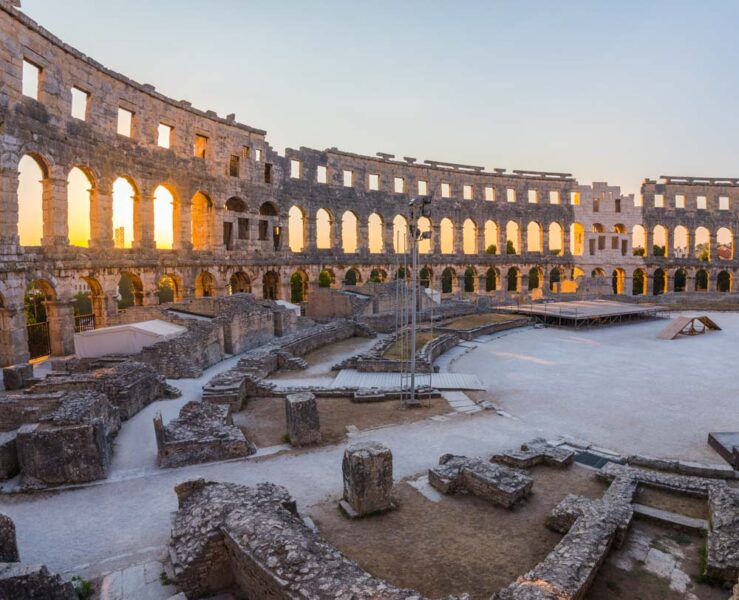
Your base on the Istrian Peninsula will be Pula, an ancient city with an iconic Roman-built arena that’s still used for concerts to this day (check out the schedule because famous bands play Pula Arena all the time in summer).
Spend your first day exploring the historic sights of Pula (a walking tour is a great way to learn more about the history), including Roman sights like the Temple of Augustus and the Arch of the Sergii. The next day you’re off on a day trip because the Istrian Peninsula is renowned for its natural beauty as much as its history.
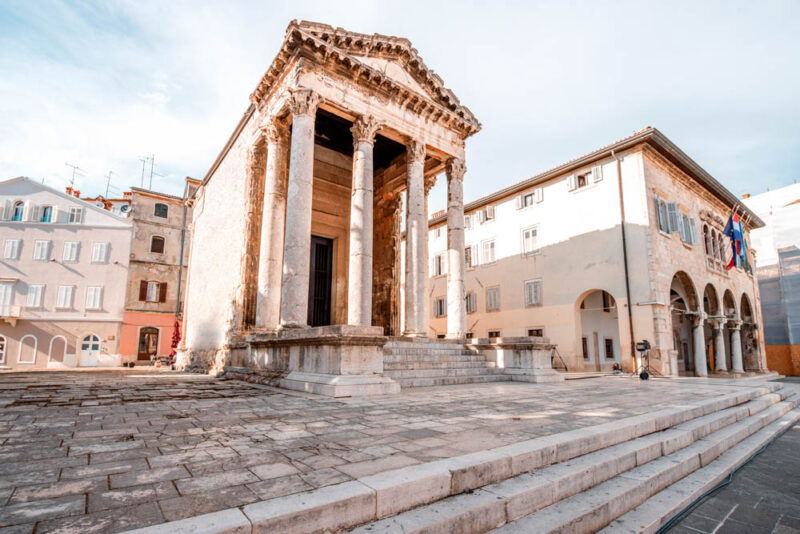
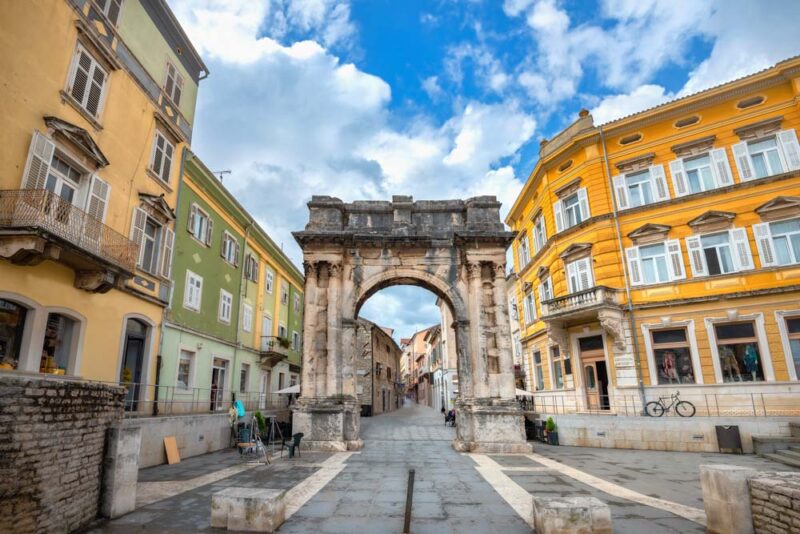
Head to Cape Kamenjak for rugged, windswept scenery on the peninsula’s southernmost tip, or visit Brijuni National Park, where 14 secluded islands await you in the Adriatic Sea. You can round the day off with a quick tour of Rovinj, one of the most picture-perfect fishing villages you’ll find anywhere in Croatia.
Brijuni National Park
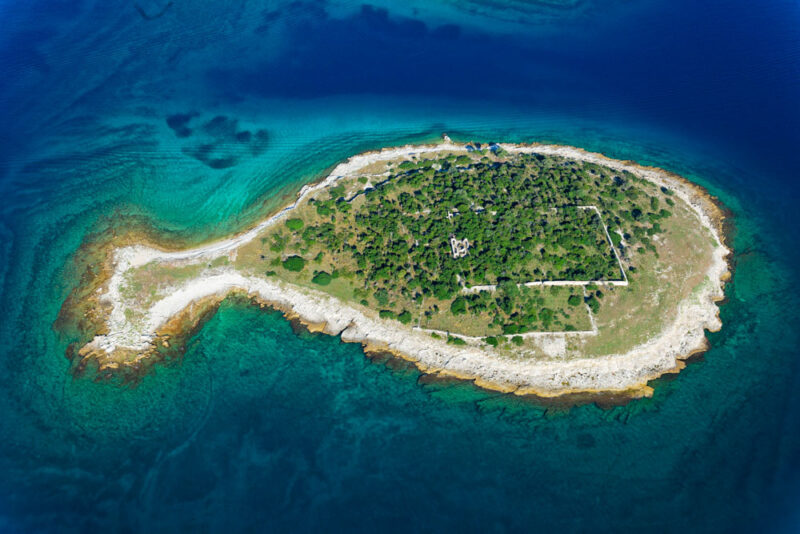
Of course, the Istrian Peninsula is renowned for its wine, pasta, and seafood (you’ll love the Italian influences). Visit Damir & Ornella for the famous Istrian raw fish, a particular local delicacy that’s remarkably similar to sushi.
Zadar – 2 Nights
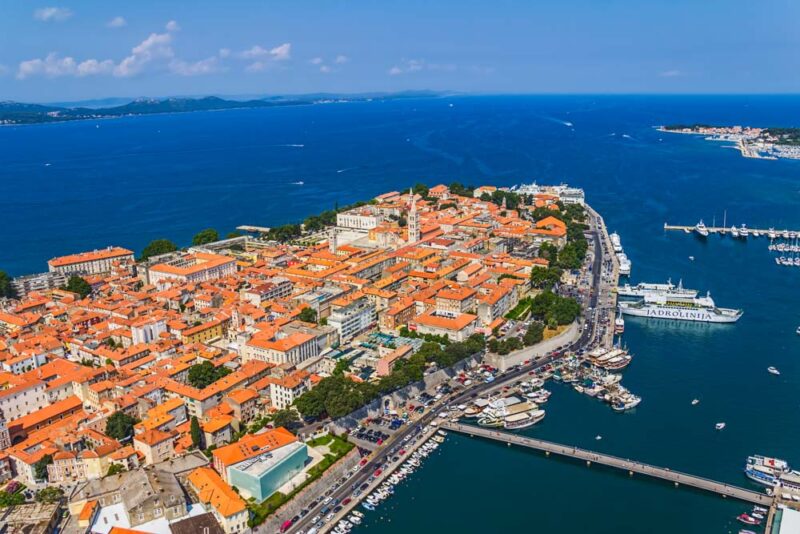
Your 14-day Croatia itinerary continues as you travel along the Dalmatian Coast. You’ll leave the Istrian Peninsula behind as you journey south to the city of Zadar.
Zadar Roman Ruins
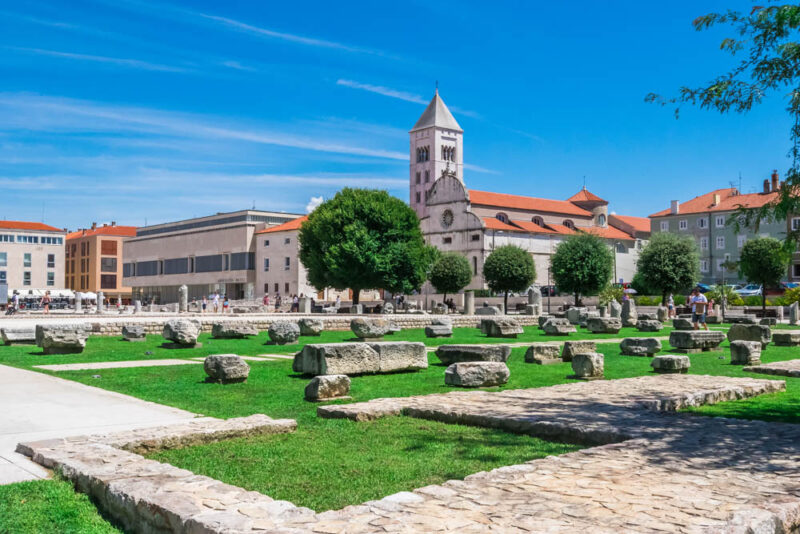
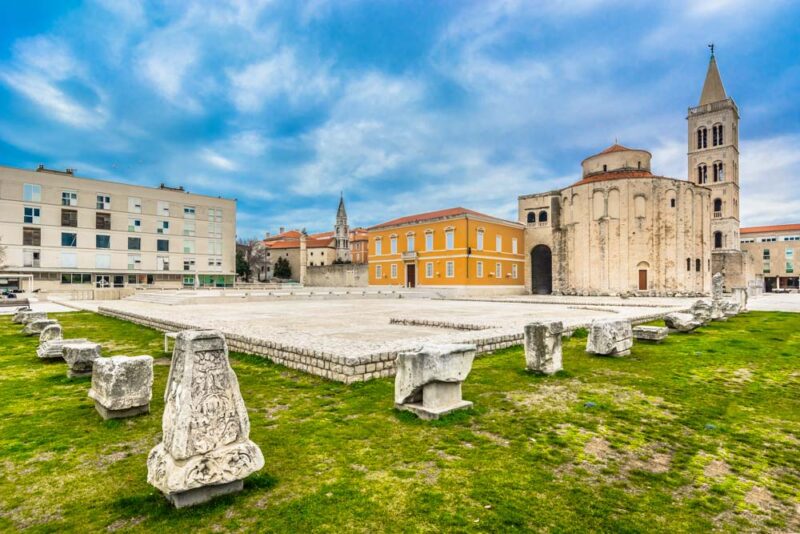
Zadar is not only one of the most beautiful cities in Croatia, but it’s also the oldest continually inhabited settlement in the country, with a history dating back to the earliest Greek inhabitants who began settling in the city as long ago as 900 BC. Start by checking out the history, including the many Roman ruins that date from around 48 BC onwards and the later Venetian fortifications built in the medieval period.
Sea Organ
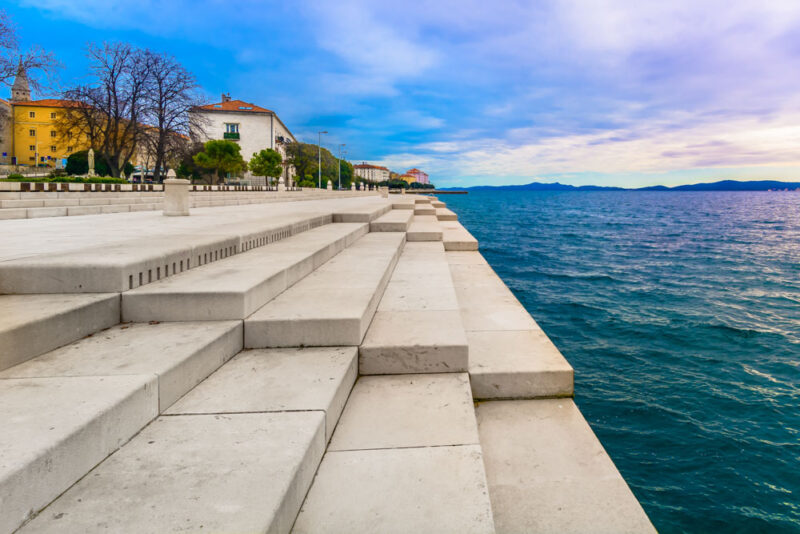
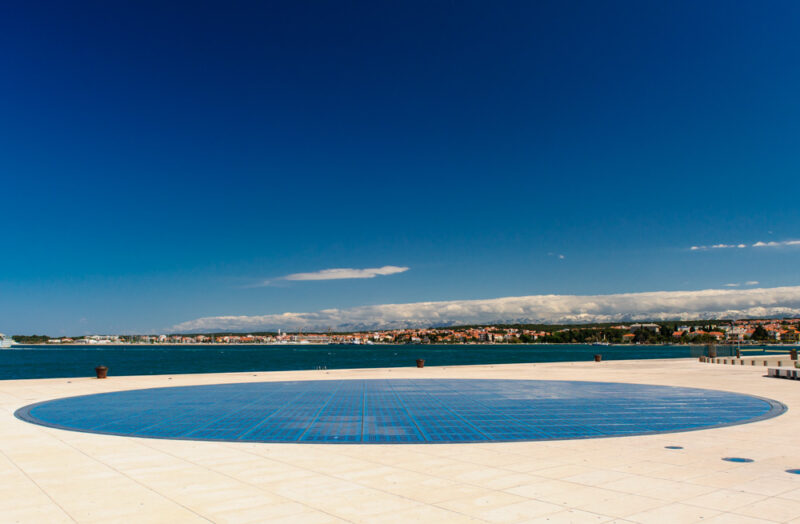
Despite being Croatia’s oldest city, Zadar is surprisingly contemporary in character. It’s often called Croatia’s entertainment capital, and you’ll find some iconic art pieces along the seafront which were designed by Nikola Basic. These two famous sites are the intriguing Sea Organ (which uses the sea waves to make music) and the Greeting to the Sun, an unusual art piece that reflects the sun to produce a visual light show.
Krka National Park (day trip or overnight) – 1 night
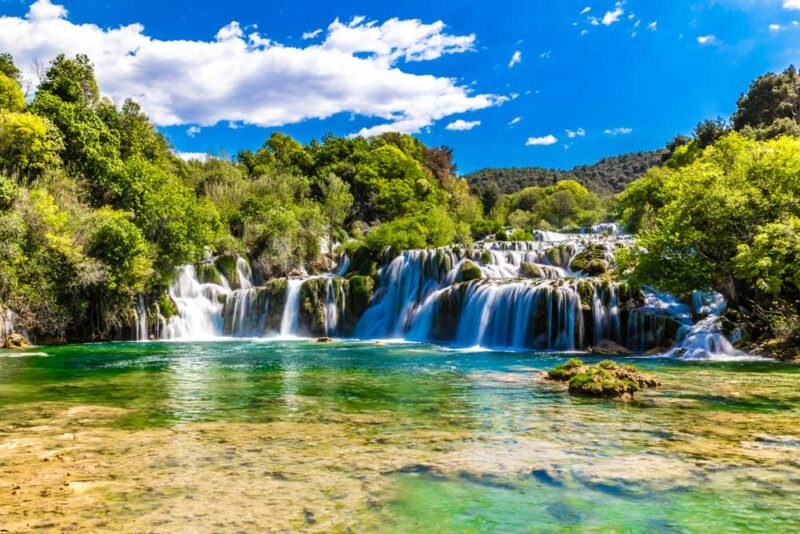
From Zadar, you’ll be visiting another of Croatia’s spectacular outdoor attractions, Krka National Park. Like Plitvice Lakes, this stunning protected area is known for its water features, including a series of seven iconic waterfalls that draw in visitors from across the world.
Within the national park, you’ll also find a series of historic water mills and monasteries lining the rivers and walking trails. The hiking is epic, the mountain biking trails tough, and the waterfalls are brilliant locations for a wild swim.
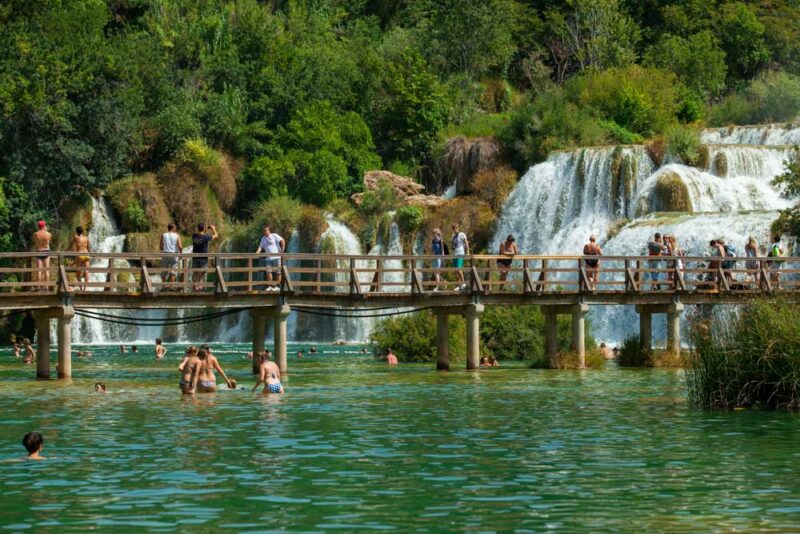
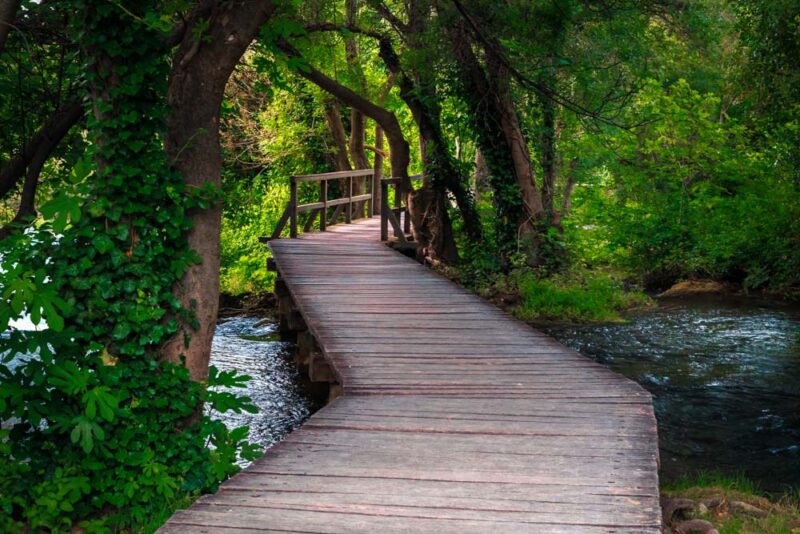
As with your stop earlier in the trip at Plitvice Lakes National Park, you can either spend the night nearby or visit on a day trip. If you’re driving, then a stopover is the easiest option; if you’re using public transport, it’s often easier to join a day tour from either Zadar or your next destination, Split.
Split – 2 nights
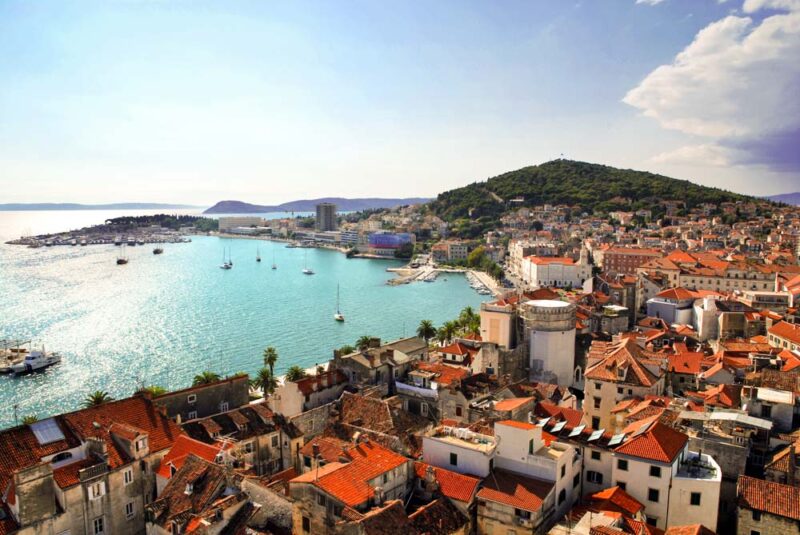
The next stop on your 2-week Croatia itinerary is Split, one of the oldest cities in the Mediterranean. Settle in with a little boutique hotel in the Old Town, where you’ll be within easy reach of the city’s best historic attractions.
The Old Town, with its narrow street and red-roofed townhouses, is made for walking, so why not start with a walking tour? You’ll learn how the city is built on the ruins of Emperor Diocletian’s Palace, which was constructed here in the fourth century AD as the retirement home of the Roman ruler.
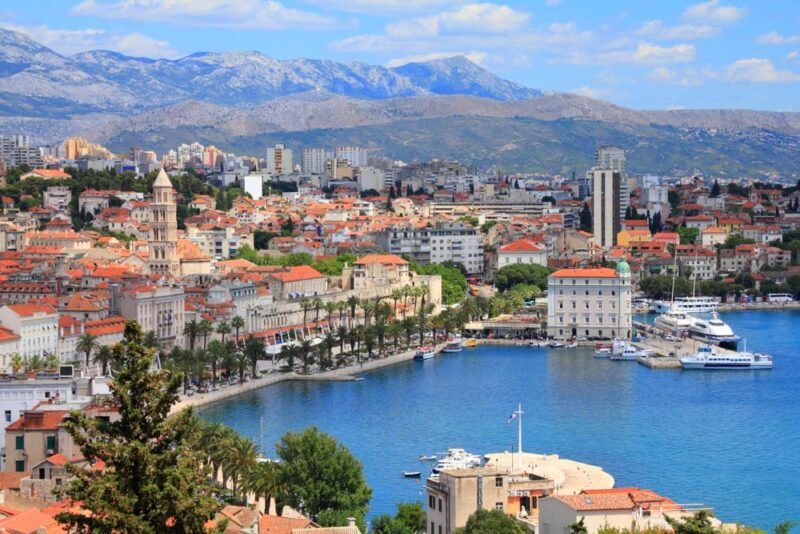
When the Roman Empire began to crumble, refugees from the nearby city of Salona fled to the relative safety of the palace walls to escape the barbarian invasions. They built their homes among the old columns, temples, and stately rooms intended for Emperor Diocletian, with the Old Town slowly expanding from crumbling ruins into the city you see today.
Roman Ruins at Salona
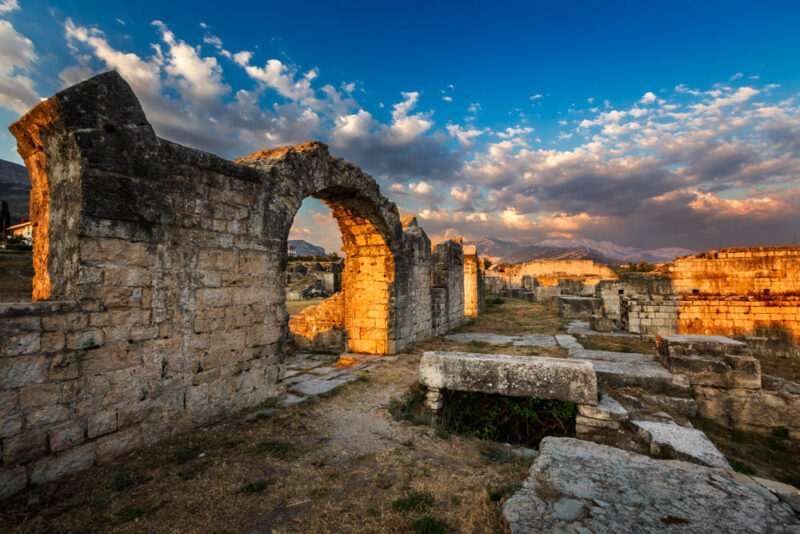
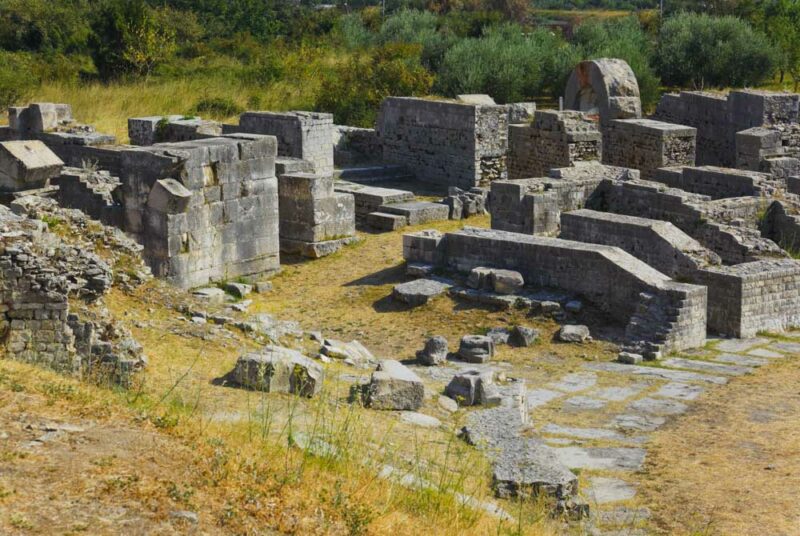
Split is fascinating, and you can complete the history lessons by visiting the nearby Roman ruins at Salona, where there’s a ruined coliseum, temples, and much more. You can also hike to the top of Marjan Hill, visit the Ottoman-era fortress at Klis to understand how Croatia has passed through the hands of empires through history, and then hit the nearby beaches for some much-needed downtime.
There are some great restaurants in Split, including many local taverns serving great Dalmatian cuisine. We recommend Konoba Fetivi and Konoba Matoni.
Brac/Hvar/Korcula – 2 Nights Island Hopping
Brac
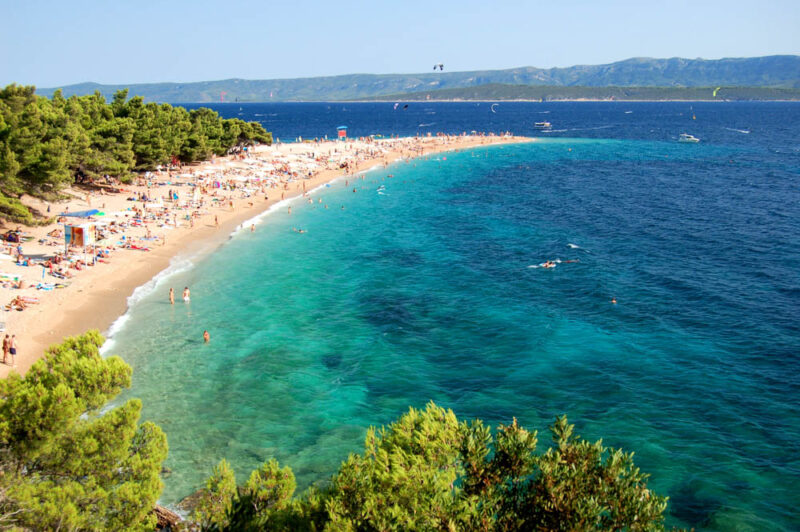
Now you have a choice to make. From Split’s harbor, you’ll have seen the ferries, sailing ships, and catamarans departing for the islands, which lie just a few miles off the Dalmatian Coast.
Hvar
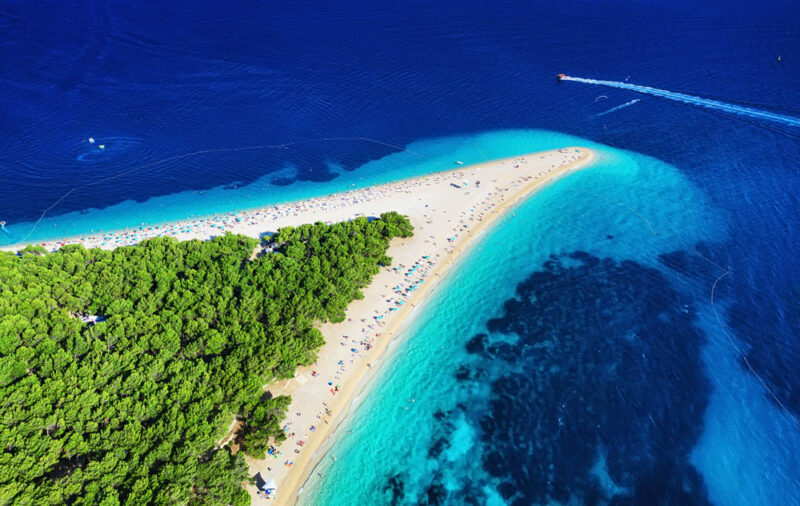
These islands are some of the best places to go in Croatia, and we recommend at least two days to visit the highlights. You can stay in Split and book yourself onto day tours, you can use the ferries to island hop around, or you can join a dedicated island-hopping tour that ends in Dubrovnik.
Korcula
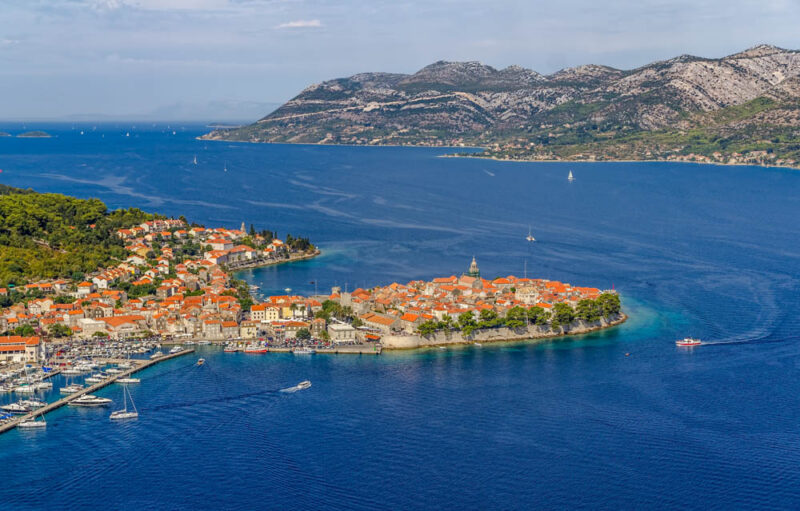
The choice is yours, but whichever option you go for, make sure you make it to the main islands of Brac, Hvar, and Korcula. The pace of life is slower away from the mainland, and you’ll find the islands are almost trapped in a time warp. Visit beaches and old Venetian ruins, tour through vineyards, and sample exceptional homegrown produce on centuries-old farms before watching the sunset gloriously over Croatia to the west.
Dubrovnik – 2 nights
The best 2-week Croatia itinerary always includes Dubrovnik, one of the most popular destinations on the Adriatic Sea. You can arrive from Split via bus, a journey that briefly takes you through Bosnia and Herzegovina before you re-enter Croatia, or you can take a ferry or join an island hopping tour along the coast to reach this old city.
Dubrovnik’s Old Town
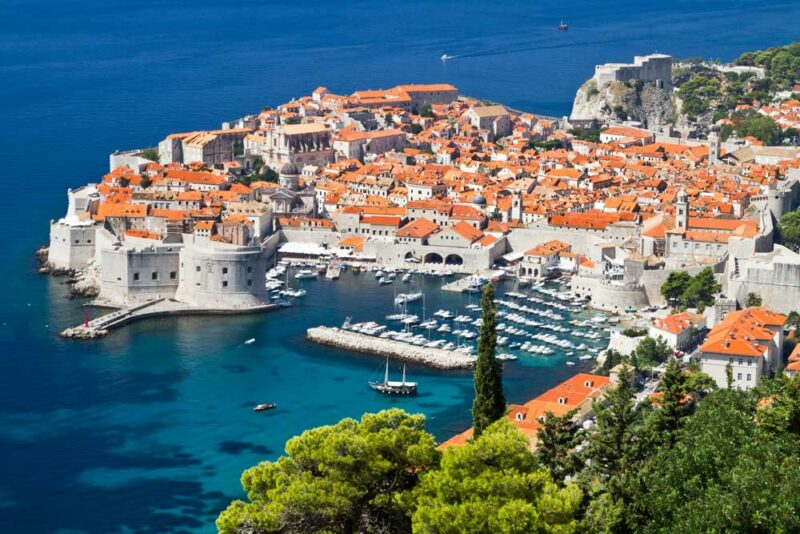
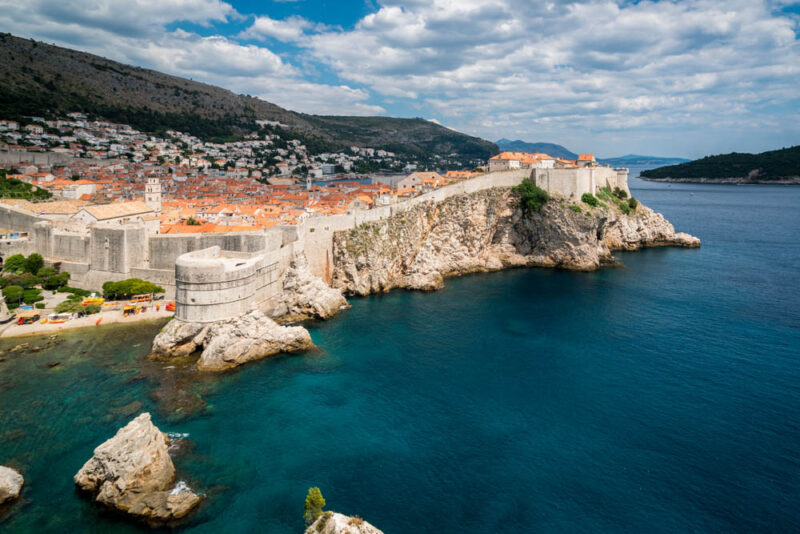
However you arrive, you’ll soon be lost among the red-roofed houses of Dubrovnik’s Old Town, a masterpiece of Venetian architecture that’s ringed by high defensive walls. There are few places in Europe quite so historic as this, so we recommend joining a walking tour to find out more as soon as you arrive.
Game of Thrones Site
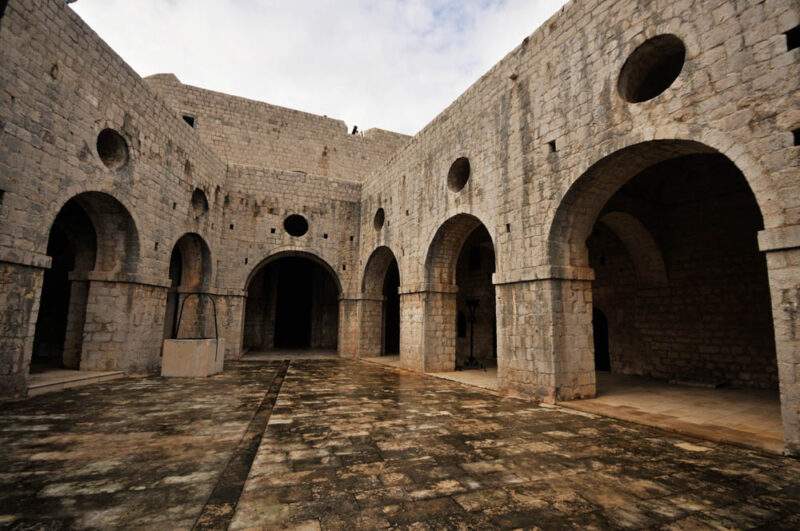
If you’re a Game of Thrones fan, you’ll recognize the city from the hit TV show, which often stood in for “King’s Landing.” You could even join a dedicated Game of Thrones tour in order to see all those iconic filming locations.
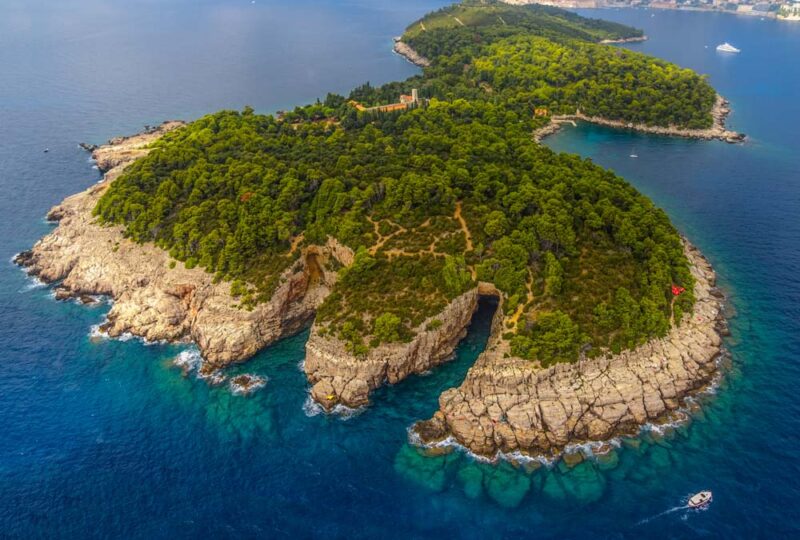
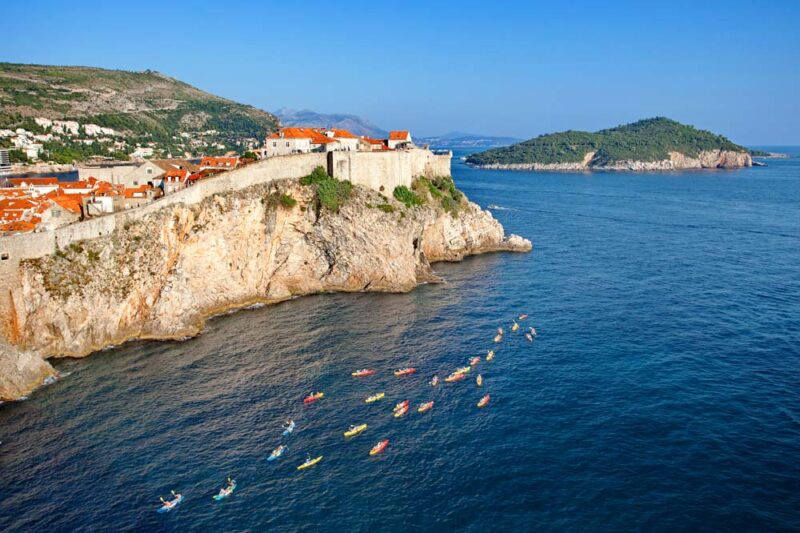
There’s a lot to see in Dubrovnik, including the City Walls, the old harbor, and Rector’s Palace. You can take a day trip over to Lokrum Island, kayak around the city’s sea walls, or hike (or take the cable car if you’re feeling lazy) to the top of Mount Srd, where stunning panoramas await you.
Lapad Peninsula
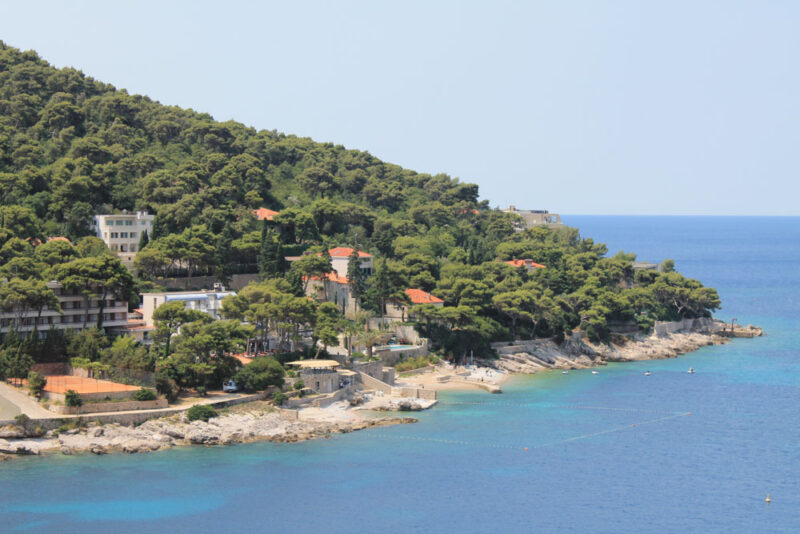
Spend the first day sightseeing, then spend the second day enjoying the beaches on the Lapad Peninsula. There are beach clubs and restaurants overlooking the Adriatic Sea all across the peninsula, and it’s an excellent place to enjoy a relaxed last day in Croatia before your itinerary comes to a close.
There you have it! That’s our perfect two-week Croatia itinerary. Where will you be visiting on your trip to Croatia?
SHARE THIS ON PINTEREST
